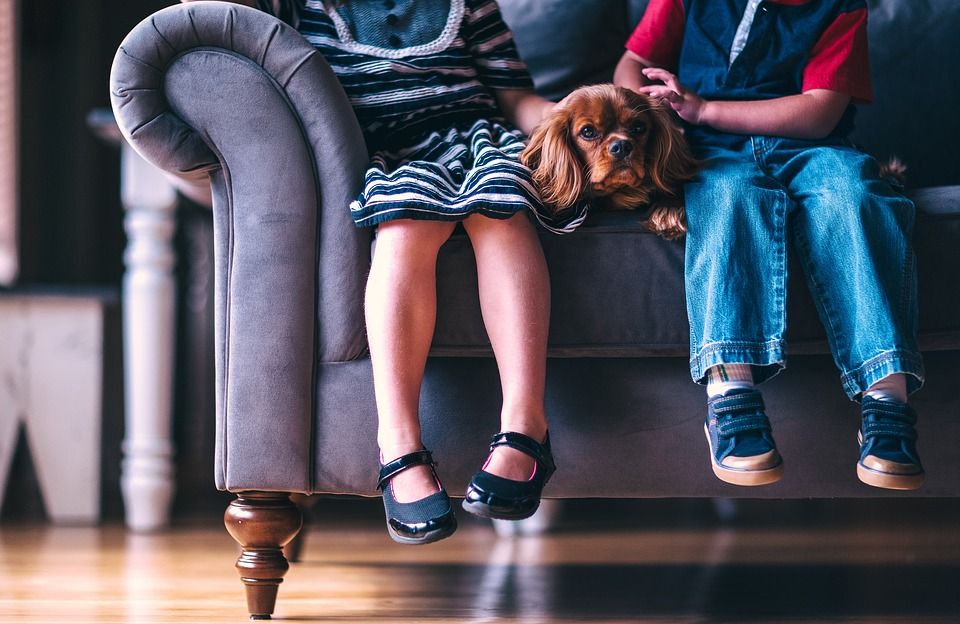How to Help Children Who Fear Dogs
Fear of dogs is extremely common among children. Unless he or she has spent a lot of time around dogs – or any other animal for that matter – children can find them quite unpredictable and this makes them appear quite scary. Fear of dogs is also something that occurs after a bad experience such as a scratch, nip or being chased. Some children are also naturally pre-disposed to fearing things that are an unknown quantity. These kids are more sensitive and have a lower capacity to deal with the emotions that they feel when experiencing something new.
However, it is inevitable that children and canine companions will still come into contact. Thankfully there are a few things that you can do to help worried kids to overcome a fear of dogs.
Respect their fear
Not taking a fear seriously is something that a lot of people do without realising the consequences. Fears and phobias are not rational and so telling someone there is nothing to be scared of will do absolutely nothing to help them. Instead it may cause them more distress that you aren’t taking them seriously and may be ridiculing them. Understanding their fear and respecting it is the very first step.
Be careful with your words
Many of us unwittingly say things that can actually make fears worse and not better. Words are particularly powerful tools when it comes to children, who rely on adults to tell them and show them the right thing to do. By saying something like “if you pull his tail he might bite you”, you are creating a negative association and adding fuel to the fear. Instead you should lead by example and use positive phrases such as “he likes it when you tickle his tummy”.
If a child chooses to approach an unknown dog it is better to ask, “would your dog like to be stroked” rather than “does your dog bite”. Or if you are an owner, saying to the child “Rex would rather not be stroked today thank you” if you think that your dog may have a negative reaction to the child.
Don’t let your dog off the lead if there are a lot of children around
It isn’t possible to know which children are scared of dogs and which aren’t, but you can guarantee that a kid that is scared will completely freak out if your pooch runs up to her at full speed. This can also cause unpredictable and dangerous behavior in children, who have been known to run into roads and in front of bikes or skateboard to try and escape a dog that is near them. If you do decide to take your dog off the lead, make sure he has excellent recall so that you can get him back to you if he wanders too close to any kids.
Take small steps
Some people believe in tough love and think enclosing a child with a dog straight away will teach the her to ‘get over it’. In fact, this will probably backfire and only heighten her phobia. Gradual introductions to dogs are far better than throwing a scared kid in at the deep end. Start small, perhaps by seeing dogs on walks at a park, or by watching a dog in the garden from a window. Then gradually increase the frequency and intensity with which the child is exposed and let them choose the pace. Pushing them too quickly will be counter-productive. If you are a dog owner and a scared child is coming to visit you, find out beforehand how much exposure is suitable and make necessary arrangements to keep your pooch at an agreed distance if it is a short visit.
Explain sniffing and licking
Many kids are disgusted or worried by the sniffing and licking that dogs do. It is important to explain to a child that this is a dogs’ way of getting to know you and it certainly does not mean he wants to eat you!
Sensible stroking
When the child reaches the point where she is happy to try and stroke the dog, it is advisable to start by teaching her to stroke his body. This avoids his much more intimidating head and will allow the child to build up confidence.
A fear of dogs doesn’t have to last forever. With the right preparation and encouragement, even the most scared of children can learn to form a long-lasting bond with man’s best friend!

